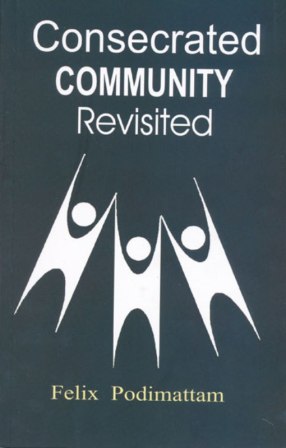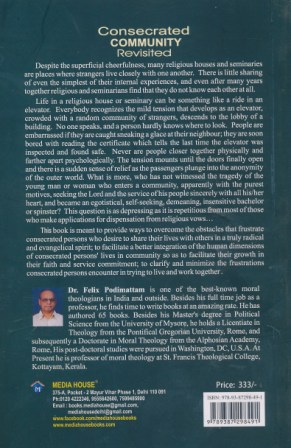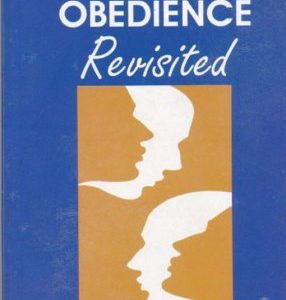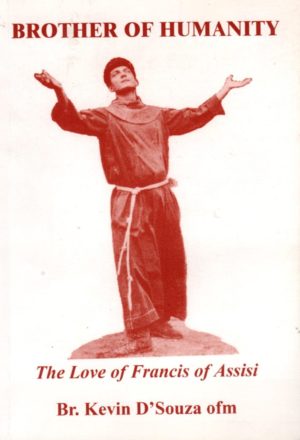Description
Despite the superficial cheerfulness, many religious houses and seminaries are places where strangers live closely with one another. There is little sharing of even the simplest of their internal experiences, and even after many years together religious and seminarians find that they do not know each other at all.
Life in a religious house or seminary can be something like a ride in an elevator. Everybody recognizes the mild tension that develops as an elevator, crowded with a random community of strangers, descends to the lobby of a building. No one speaks, and a person hardly knows where’to look. People are embarrassed if they are caught sneaking a glrce at their neighbour; they are soon bored with reading the certificate which tells the last time the elevator was inspected and found safe. Never are people closer together physically and farther apart psychologically. The tension mounts until the doors finally open and there is a sudden sense of relief as the passengers plunge into the anonymity of the outer world. What is more, who has not witnessed the tragedy of the young man or woman who enters a community, apparently with the purest motives, seeking the Lord and the service of his people sincerely with all his/her heart, and became an egotistical, self-seeking, demeaning, insensitive bachelor or spinster? This question is as depressing as it is repetitious from most of those who make applications for dispensation from religious vows…
This book is meant to provide ways to overcome the obstacles that frustrate consecrated persons who desire to share their lives with others in a truly radical and evangelical spirit; to facilitate a better integration of the human dimensions of consecrated persons’ lives in community so as to facilitate their growth in their faith and service commitment; to clarify and minimize the frustrations consecrated persons encounter in trying to live and work together.
Dr. Felix Podimattam is one of the best-known moral J theologians in India and outside. Besides his full time job as a professor, he finds time to write books at an amazing rate. He has ^EgigA: authored 65 books. Besides his Master’s degree in Political ¦ Science from the University of Mysore, he holds a Licentiate in Theology from the Pontifical Gregorian University, Rome, and subsequently a Doctorate in Moral Theology from the Alphosian Academy, Rome, His post-doctoral studies were pursued in Washington, DC, U.S.A. At Present he is professor of moral theology at St. Francis Theological College, Kottayam, Kerala.
CONTENTS
INTRODUCTIOn
CHAPTER ONE
NATURE OF CONSECRATED COMMUNITY LIFE
1. Misunderstandings regarding Consecrated Community Life
2. Meaning of Consecrated Community Life
2.1. General Notion of Consecrated Community
2.2. Basis of Consecrated Community
2.3. Purpose of Consecrated Community
2.4. Stages in the Development of Community
CHAPTER TWO
FULFILMENT IN CONSECRATED COMMUNITY LIFE
1. Group Dynamics
2. Strong Community Identification
2.1. Support to Faith Commitment
2.2. Goal Acceptance
2.3. Needs Satisfaction
2.4. Frustration of the Gratification of Needs Inconsistent with the Commitment as Religious
2.5. Perceived Prestige
2.6. Status Growth
2.7. Shared Decisions
3. Healthy Communication
3.1. Nature of Communication
3.2. Blocks to Communication
3.3. Dialogue as a Model for Communication in Communities
3.4. Some Ground Rules for Communication in a Community
3.5. Levels of Communication
3.6. Developing and Maintaining Trust in Community
3.7. Conditions that Engender Growth Healing, and Change in Groups
3.8. Attitudes to be Avoided
3.9. Attitudes to be Cultivated
CHAPTER THREE
PASTORAL ASPECTS OF CONSECRATED COMMUNITY LIFE
1. Some Problems of Community Living
1.1. Friendship
1.2. Pluralism in Community
1.3. The Generation Gap What is Generation Gap?
1.4. Conflict Resolution in Community
1.5. Retirement
1.6. Community Rights and Individual Rights
2. Small Group Living
2.1. Advantages of Small Communities
2.2. Disadvantages of Large Communities
2.3. Disadvantages of Small Communities
2.4. Advantages of Large Communities
2.5. Ideal Size of Small Communities
3. Living Alone and Community Life
4. Community Life in Rectories
5. Living in Mixed Communities
5.1. Widespread Practice in the Early Church
5.2. Examples of Mature and Holy Men and Women
5.3. Some Recent Experiments
5.4. Existence of Mixed Communities in India Today
5.5. Advantages of Mixed Communities
5.6. My Experience
5.7. Answer to Objections
6. Community Recreation
7. Modern Media and Community
8. Community Meal
9. The Future Communities





Reviews
There are no reviews yet.